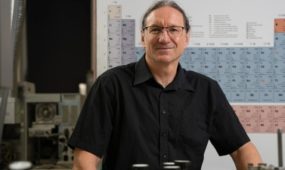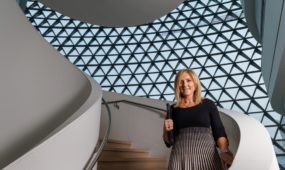Microchip breakthrough brings STEM technology into primary schools
Education
A simple electronics development platform is giving the power of advanced STEM technology to children and some of the world’s most disadvantaged people.

Sign up to receive notifications about new stories in this category.
Thank you for subscribing to story notifications.
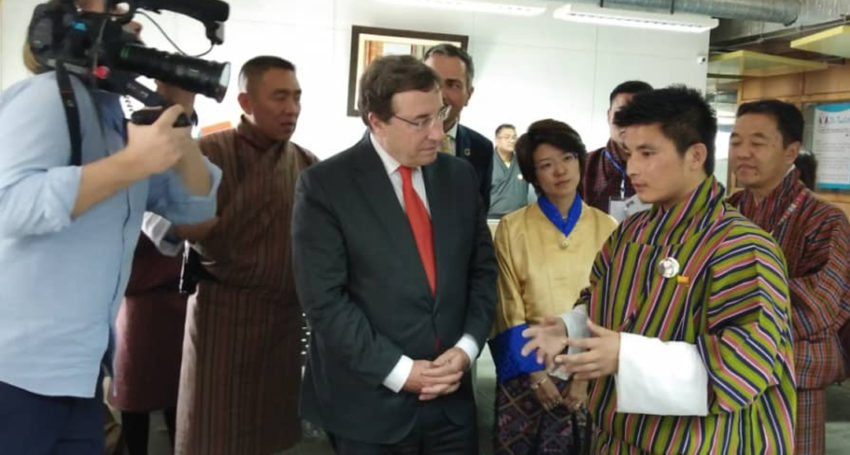
Developed in South Australia by eLabtronics, the runlinc platform is being taught to children as young as eight years old and has started a roll out in Bhutan and India.
Unlike other electronic prototyping platforms, such as Arduino, runlinc’s development system software and corresponding web page is already on the Wi-Fi chip, dramatically simplifying the programming process.
This allows a typical programming task, such as building a web page to control two LED lights, to be completed in 30 minutes using six lines of code compared with 30 hours and more than 120 lines of code for Arduino.
eLabtronics CEO Peng Choo said the new development platform was being rolled out as fast as possible “from the ground up” by teaching young people how to use it.
He said Runlinc achieved global patent pending status in January and the company was in the process of applying for a Centre for Defence Industry Capability (CDIC) grant to teach runlinc to school students as young as eight years old as part of the Australian Government’s focus on STEM education.
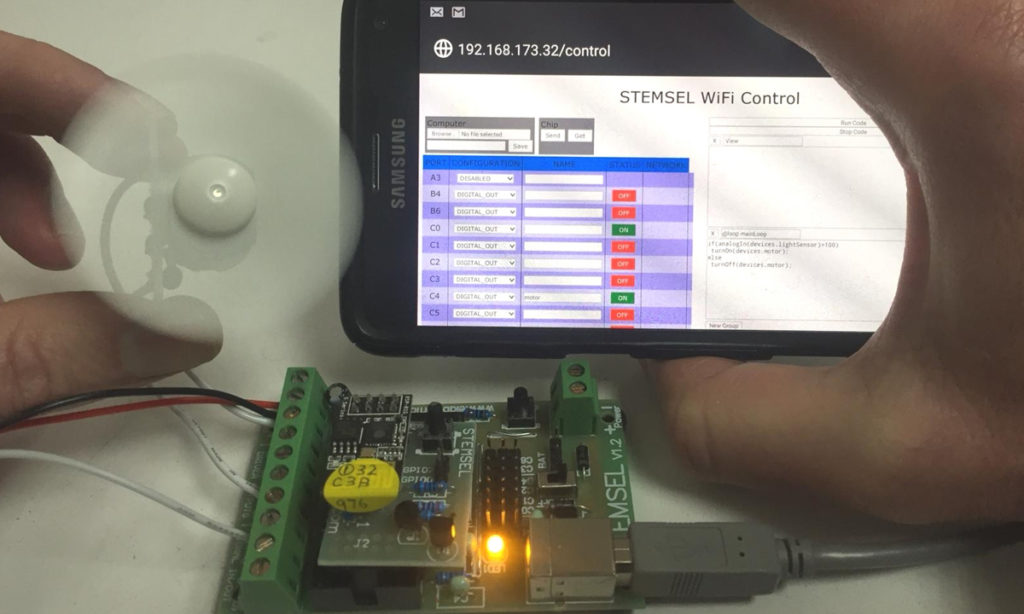
“The platforms at the moment are either too simple – like Lego – or too hard like Arduino,” Dr Choo said.
“We’ve actually invented something where suddenly they can do Artificial Intelligence, Internet of Things, they can create their own web pages and little apps from an early age.
“Runlinc is so easy to use that even upper primary school students can get started so can you imagine what it also does for industry when it’s that easy.”
While potential applications for the technology are almost endless, early uses include DIY smart home kits and IoT enabled sensing devices for farmers.
A runlinc inventor’s kit including a Wi-Fi chip retails for A$200.
eLabtronics was started by Dr Choo and Miroslav Kostecki in 1994. It launched an education arm called STEMSEL in 2009 to teach young migrants STEM skills. The not-for-profit organisation aims to teach disadvantaged children how to use electronics in combination with Social Enterprise Learning (SEL) and operates in Kyrgyzstan, Cameroon, India, Brunei, Malaysia, Nepal, Thailand, Philippines, Kenya, Bhutan, Australia and the United States.
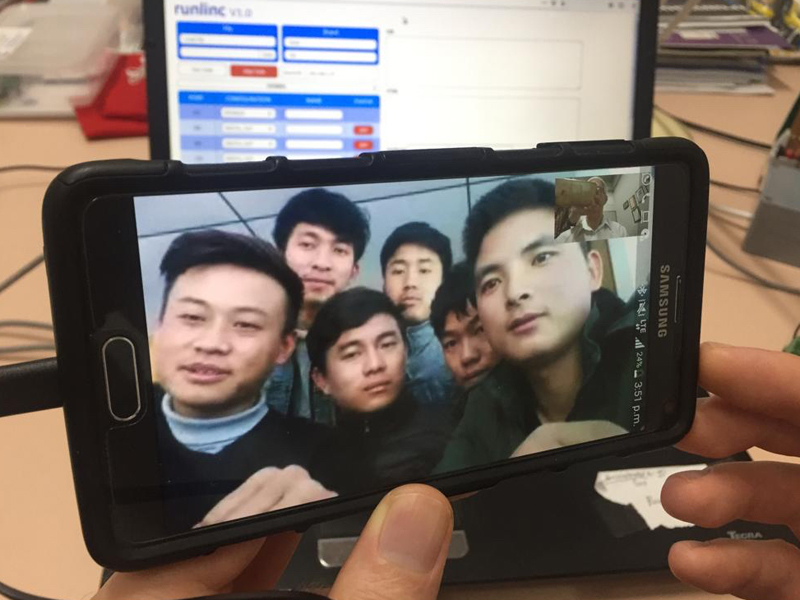
Dupjay Pelzang (right) and other tech workers in Bhutan learning runlinc via WhatsApp.
Bhutanese innovator Dupjay Pelzang was the first person in his country to learn and master the runlinc platform. He is now incorporating it into electronic scarecrows for Bhutan’s government that use AI and IoT to scare off a range of agricultural pests such as wild boars, deer, monkeys and elephants.
About half the Himalayan nation’s 800,000 citizens are involved in agriculture, however wild animals such as pigs, deer, monkeys and elephants destroy a large proportion of the annual harvest.
This presents a particular problem in Bhutan because of a deep belief that all actions should bring the most help and least harm to other beings. This means that agricultural pests cannot be physically harmed.
Pelzang will travel to neighbouring India in the coming months to teach runlinc to 3000 students at the 5000-student SSM College of Engineering near Chennai in the state of Tamil Nadu, which already has links with the South Australian STEMSEL program.

Dupjay Pelzang’s village in Bhutan.
Dr Choo said their model for runlinc was for India to become a centre for its global expansion in the developing world.
“There are 6000 colleges like that operating in India accredited by the top universities and it won’t take more than three months before 3000 students will be training another 3000 high schools,” he said.
“They also have international students at that college in India from Nigeria, Kenya, Myanmar and Thailand so it will spread to those places soon.”
“This technology is very much about a change of mindset because this program will run outside the chip, which is a completely different mindset.”
STEMSEL already runs Inventors Clubs in schools for thousands of students around the world. The new runlinc technology was introduced to Inventors Club students in Adelaide in 2017.
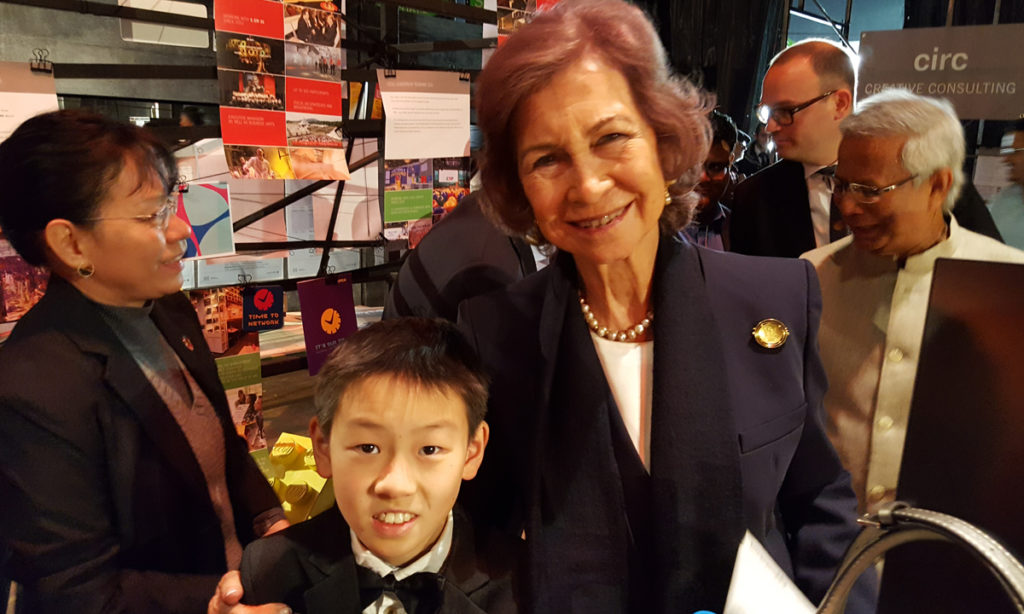
South Australian student Michael Zhang with Queen Sofia of Spain in Paris.
This resulted in one primary student, Michael Zhang, winning a Royal Adelaide Show competition and a trip to Paris for building a Wi-Fi powered fish feeder and a trap that uses lasers to count grasshoppers for chicken farmers.
Last year’s Global Social Business Summit hosted by Nobel Peace Prize winner Dr Younis Muhammad exposed the runlinc technology to range of influential social entrepreneurs including Queen Sofia of Spain and senior United Nations delegates.
Dr Choo said the eLabtronics technology made it possible for AI technology to be taught in primary schools.
“Runlinc can play a critical role in advancing STEM education in Australia and around the world,” he said.
Jump to next article
